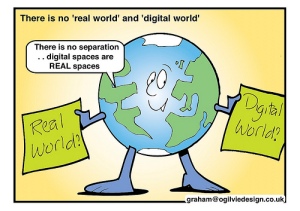
A Spectrum of Users
It is quite apparent to me that the notion of digital natives and digital immigrants is outdated. I agree with Lanclos (2014) when she states that I didn’t just know how to use the internet and it’s related technologies like a first language as Prensky (2001) suggests. I wasn’t just born with a how-to manual embedded in my brain.
Continue reading →














